Are you a Quiet Speculation member?
If not, now is a perfect time to join up! Our powerful tools, breaking-news analysis, and exclusive Discord channel will make sure you stay up to date and ahead of the curve.
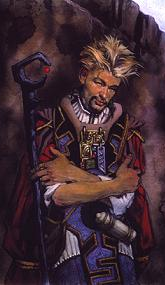 Having wrapped up testing for Ethan Fleischer's deck, Tooth and Claw, for his entry in the Great Designer Search 2's next challenge (designing an intro pack), we had little time to spare with the remaining three decks queuing up ahead of us. Ethan's deck set a high standard for what we could expect: it was clean and fun, with a good mix of cards and a balanced mechanic in evolve. We sent him the final bit of analysis and set his deck to the side.
Having wrapped up testing for Ethan Fleischer's deck, Tooth and Claw, for his entry in the Great Designer Search 2's next challenge (designing an intro pack), we had little time to spare with the remaining three decks queuing up ahead of us. Ethan's deck set a high standard for what we could expect: it was clean and fun, with a good mix of cards and a balanced mechanic in evolve. We sent him the final bit of analysis and set his deck to the side.
Since we'd resolved to run the decks through our precon gauntlet in the order in which they were received, that meant that Scott Van Essen's Breakout from Malgareth was next. Unlike the other three finalists, Scott's deck was completely mocked up on Magic Set Editor by one of his contributors, so we were able to better replicate the feeling of playing on actual cards. This wasn't vital, but it helped 'suspend disbelief' a little and get us into the mood for the set. Additionally, Scott's graphic collaborator had something of a sense of humour, and some of the card images were hilarious (we've used these card images for this article for Scott's deck). I'd had them printed up in full colour, so we cut them, sleeved them, and got underway.
Scott Van Essen: Breakout from Malgareth
The World: Malgareth. "In an underground prison, death is the only escape."
The Mechanic: Breakout is a creature-based keyword that triggers and grants its creature a special ability whenever it is attacking and an attacking creature is unblocked. This was meant to simulate a riot or breakout in a prison, where the prisoners wildly rush their guards. There have been some templating concerns with the mechanic, as it seems a bit complicated, though in actual practice we found it quite simple to grasp. Basically, if any of your attackers are unblocked, then everyone with "breakout" gets a nifty little bonus. An example:
You have a Murderous Urchin and a Weakened Vampire, and are swinging in with both. Your opponent, not wanting to trade his beloved Spider for the one-drop Urchin, decides instead to block the Vampire. Ordinarily, this would result in the Vampire dying to the Spider, but not so! The Vampire has breakout, and the Urchin is unblocked. Because no blocker was assigned to the Urchin, the Vampire's breakout triggers- and this is critical- even though the Vampire was itself blocked. The Vampire gets +1/+1 and lifelink until the end of turn. Although it's not enough to kill the Spider outright, the Spider no longer can kill the Vampire either, so the two bump against each other (and you gain +3 life). The Urchin, of course, nicks your opponent for one.
The Deck: Scott's deck is a Black/Red agrro deck that features a generous serving of breakout. What was a little concerning was the mana curve. Like Ethan's, it was heavy on the back-end, with nine 4-drops and four 5-to-6-drop creatures it clearly was a deck that wanted the luxury of a little time. Wisely, Scott had salted in most of the noncreature spells in the cheaper casting-cost slots, so the deck would seldom be without something to do. In other colours, you might look to some ramp to accelerate your mana base production, but Black and Red don't go in for much ramping. Instead, they typically rely on removal to keep the board state manageable while biding time for the heavier hitters to make their way onto the scene.
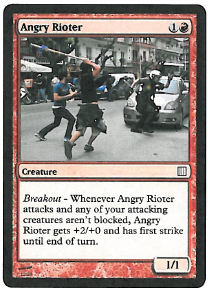 Breakout Creatures: Scott's deck was still in the tinkering stages when it made its way to us, and a number of the creatures had changes made to them after we'd received the file and during our testing. We were quite happy to be flexible and, without exception, the changes were necessary ones. The breakout beaters were the biggest concern. The deck had a healthy proportion of them (just shy of 50% of all creatures) and their effects were widely disparate. They began rather small with a pair of Angry Rioters as two-drops. Gaining +2/+0 and first strike on breakout, they frequently punched above their weight. A similar creature further up the chain (costing five mana) was the Breakthrough Bandit, a 3/3 which could get double strike. There were removal effects in the Grifter (Shatter) and the Apprentice Assassin (Assassinate). The Weakened Vampire,that we saw above, and the remaining creatures had some rather nifty tricks.
Breakout Creatures: Scott's deck was still in the tinkering stages when it made its way to us, and a number of the creatures had changes made to them after we'd received the file and during our testing. We were quite happy to be flexible and, without exception, the changes were necessary ones. The breakout beaters were the biggest concern. The deck had a healthy proportion of them (just shy of 50% of all creatures) and their effects were widely disparate. They began rather small with a pair of Angry Rioters as two-drops. Gaining +2/+0 and first strike on breakout, they frequently punched above their weight. A similar creature further up the chain (costing five mana) was the Breakthrough Bandit, a 3/3 which could get double strike. There were removal effects in the Grifter (Shatter) and the Apprentice Assassin (Assassinate). The Weakened Vampire,that we saw above, and the remaining creatures had some rather nifty tricks.
The Back Alley Slasher was a 4/4 for four mana that came into play with two -1/-1 counters on him. Whenever his breakout triggered, he was free to move one of these counters to another target creature. The Seizer of Thoughts allowed you to Duress your opponent each time its breakout engaged. Not only was this rather broken, it was time-consuming and horribly unfun. After getting in three times in a row on my opponent in one of our matches, we switched to a simple "choose and discard a card" with no reveal. (To be fair, Scott had told us upfront that the card's ability as-is was suspect). Finally, there was Angathrak, Gang Leader- the deck's "foil premium rare." A beefy 5/5 body for 6 in red, his breakout triggered a Relentless Assault effect. Although with so many abilities possible the potential for confusion was there, we generally found that this added a welcome level of complexity to blocking situations.
Other Inmates: Many of Breakout from Malgareth's other beaters were intended to enable breakout situations. The Red one-drop Pawn of Angathrak was a simple 1/1 body that could be sacrificed to give target creature haste until end of turn. When one of the deck's two Tunneling Escapists attacked, they'd make a small creature unblockable that turn. And the Hulking Brute was only blockable by two or more creatures. Also of note was the Resourceful Scavenger, a 2/1 body for two that allowed you to "loot" (draw a card, then choose and discard a card) when it entered the battlefield. With Mark Rosewater talking about moving looting to red, it was a timely inclusion. [Editor's Note: The exact hypothetical looting card was discussed on Episode 239 of Monday Night Magic, with both myself and Conley Woods agreeing it would be amazing.]
Removal: Supporting the jailbreak was a solid amount of removal and combat trickery. The Ambusher was a 2/2 creature with haste that did 2 points of damage to another creature or player (these quickly became a favourite). Pile On put a -1/-1 counter on a target creature for each creature you controlled. Drug the Guards tapped two target creatures, leaving the gift of a -1/-1 counter behind for each (a sort of double Stabbing Pain). Finally, Falling Stalactite, although expensive, was useful and flavourful, destroying target land and dealing 3 damage to a creature or player. Like many intro decks, it was enough burn to be useful but not quite as much to get complacent. Topping it off were a pair of [card Thunder Strike]Thunder Strikes[/card], combat tricks and ersatz removal in one.
Miscellany: Befitting an intro deck, the rest of the noncreature cards were something of a hodge-podge. There were a pair of Rise Ups, which were comparable to Dragon Fodder but game them haste in return for costing one more mana. Flailing in the Dark was a Black enchantment that gave blocking creatures -2/-0 until end of turn (obviously making attacking more favourable). Buddy System was a version of Splinter Twin, while Fist of Chains was an Equipment that granted intimidate; supremely useful here.
The final spell was the controversial Instigate Anarchy, a flavourful and evocative sorcery and one probably a bit too cheap for its effect. In the testing to come we'd both blow out out games with it, and essentially Time Walk our opponent when we tapped out and whiffed. It was one of the most powerful (and most fun) cards in the deck.
And there we had it, Breakout at Malgareth. Stall in the early and early-midgame until that fourth critical land drop, and begin funneling out your prisoners. Attack early and often once your breakout bodies hit the table, and back it up with burn to clear the way. With precious few ways to damage an opponent, Breakout would be doing most of its talking in the red zone.
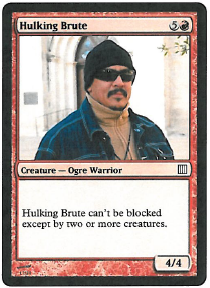 The Playtest: Scott had submitted a list of things he wanted us to watch out for. Was his deck fun? Did it permit the opponent to also have fun? How did breakout impact the way you played the deck? Was it swingy? How did it do on a crowded board versus an empty one?
The Playtest: Scott had submitted a list of things he wanted us to watch out for. Was his deck fun? Did it permit the opponent to also have fun? How did breakout impact the way you played the deck? Was it swingy? How did it do on a crowded board versus an empty one?
Like a chef in a well-stocked kitchen, we threw open the card boxes and begin pulling precons out, to represent a variety of opposition. As before, we operated on a five-point scale system and graded after each game. A score of '3' meant that you felt your deck was approximate in power to the other, win or lose. A '2' or a '4' meant that your deck was either somewhat weaker or stronger, while '1' and '5' meant that the test was lopsided. We also kept our standard "three games per deck" structure to the gauntlet.
Breakout from Malgareth opened up with a hideous beating against Magic 2011's Stampede of Beasts. This was our go-to deck for fat, efficient bodies, and no-one has them like Green does. These are a litmus test against the designer's creature cost. Like Ethan's deck, Scott's was filled with creatures that cost more for the body because they come equipped with a special ability. Price them too highly, and the deck will find itself playing 2/2's while Big Green stomps their head in with 4/4's or worse. It's an ideal first stop.
Breakout from Malgareth did a passable job, taking one game of the three, but the difference in quality was noticeable- it just couldn't race a good Green start. In the game it won it did manage to get out early enough, and the Seizer of Thoughts (the critter whose breakout ability was a Duress) struck three times in succession, fatally depleting Stampede's hand. This is where we decided that the Seizer was indeed broken, and went with the less powerful discard option.
Next up was Phyrexian Poision, whose inefficient Infect critters would be a better match for Breakout's. This was in fact the case- they were very balanced against one another, and we both played these three games with big grins on our faces. Although a little awkward at first due to templating, breakout was proving to be a fun mechanic, and it worked well here. Each game felt balanced, and while Breakout picked up a 2-1 record, both wins were relatively close.
We stayed with Scars of Mirrodin for the next matchup, selecting Metalcraft. Don't let Breakout's 0-3 record fool you here, for Scott's deck made a fine accounting for itself. The first match was what we call a swingback, where one deck gets its hands around the throat of the other and is poised to win, but the other deck manages to battle back and snatch the victory. These are, naturally enough, encouraging signs of balance. The second match was a blowout, with an Embersmith grinding up Breakout's smaller creatures, but the third was relatively close.
With the beats and midrange options covered, we moved on to aggro/swarm with Worldwake's Fangs of the Bloodchief. This was a similar test as Stampede of Beasts, but in the early game versus the mid- and end-game. With the Breakout player overpaying for small bodies, we expected the fast-starting Fangs to chew it up, and it did. Breakout lost all three matches here. Fangs was consistently able to get out some early beaters, and had the removal to keep the lanes clear once Breakout started delivering bodies. With Breakout's sparse spot removal, Anowon, the Ruin Sage was virtually unbeatable when he resolved.
In theory, if Breakout could last until the middle of the game the tide should begin to turn as it deployed its answers. In game three it had the chance to do so. In what would later be billed as the "game of the day" each side found a way to start gaining life and the game went long. Fangs had a Vampire Nighthawk that Breakout couldn't answer, while Breakout landed a Weakened Vampire who had lifelink on breakout. Breakout showed tremendous resilience- it snuffed out [card Anowon, the Ruin Sage]Anowon[/card] with a Pile On, got a two-for-one with the Back Alley Slasher (which killed a Child of Night with a -1/-1 counter when another critter got through and triggered its breakout, and then since it was now a 3/3 it took its blocker- a Jagwasp Swarm- with it). The heartbreaker of the game was when Breakout could have siezed the win with a 6-point Instigate Anarchy, and only got a 1/1 Pawn of Angathrak for its troubles.
Because of the substantial difference in quality beween the Zendikar-block intro decks and the most recent ones for Scars of Mirrodin, we decided to go back to Mirrrodin for Myr of Mirrodin, an early/mid-range deck with a heavy artifact creature component. These were far more swingy affairs. Breakout owned the Myr with a Grifter (who destroys artifacts on breakout) in game one, and dominated game two by dropping its bombs (a Hulking Brute and Angathrak, Gang Leader) after softening up the board with Ambushers for a couple of two-for-ones (the 2 damage the Ambushers did upon entering the battlefield were perfect for slaying Myr). The Myr rolled back with [card Myr Galvanizer]Galvanizers[/card] and a [card Myr Battlesphere]Battlesphere[/card] in game three; Breakout never stood a chance.
Wanting to take another look at a faster-paced environment (where Breakout seemed most vulnerable), we rounded off the gauntlet with Worldwake's Rapid Fire (Boros landfall aggro) and Zendikar's Kor Armory. Breakout broke even here, going 3-3, and by the end of the testing session had compiled a slightly worrying 8-13 record.
Again, we'll reprint our final analysis from the report we delivered to Scott.
Overall I’d say Breakout from Malgareth was good, but it needs some tuning to consistently perform. Part of the problem was identified above: this deck can’t race well on the creature curve. Sure it’s got great abilities rolled into its beaters but if you keep getting outclassed and outpaced by your opponents creatures when are you going to be able to profitably attack? Green, with its big and efficient bodies, absolutely ate Breakout’s lunch. Decks with a bit of fat in them, like Infect critters, matched it perfectly, while decks with cheaper critters seemed to be at a disadvantage once Breakout stabilized, because then you had two sets of similarly-sized critters out but one had a slew of nifty tricks with breakout. Fast aggro, like the Vamps, would just kill the deck too quickly to get it stabilized.
What’s the solution? It feels like there’s nothing in the deck that’s not doing some busywork, and that starts to feel more like Constructed and less like an intro deck. I’d prune the tree a little, and replace some underperformers with some decent, on-curve efficient vanilla bodies. Is it as sexy as the all-singing, all-dancing breakout ensemble? No, but it provides a hedge against getting blown out, slows itself down a bit when it looks to be the deck doing the blowing-out, and keeps it at a somewhat more stable and moderate rate of performance.
To hit your questions directly:
- Is it fun?
Definitely. I really liked breakout. I generally am not a big fan of critters or combat, so making combat involve decisions it normally doesn’t made it “fresh’ again. I really enjoyed the different ways it affected the board. It was a little hard to grasp at first, but was quick to be understood once seen.
- Is your opponent having fun?
Only a blazing Incite Anarchy threatened their fun at any point. Otherwise definitely, especially with Phyrexian Poison.
- Does the Breakout ability read well?
It’s okay. Again, a bit hard to grok in the abstract, but once seen a few times becomes somewhat intuitive.
- How does the Breakout ability change the way you play?
It incentivized me to attack more than I normally do, and made numbers count. I often had to settle the question: is the creature(s) I’ll lose while attacking worth more or less than the benefit from doing so? I really enjoyed that part of it.
- Is the play too swingy?
See: Incite Anarchy. At any other point, not consistently.
- How does it play on a crowded board? On an empty board?
On a crowded board, it definitely clogs the middle. You don’t want to go all in because a bad attack (and I made one at least once) can be catastrophic, or if the opponent has combat tricks. Still, that’s a good tension to have. On an empty board, it can result in a soft lock if you have the right creatures out. That’s not necessarily bad, because it didn’t find a lot of empty boards to rampage over.
And so we set aside Breakout from Malgareth, and readied to spend the latter half of the day with Devon Rule's contribution, which we'll call Utopian Gold as it came through unnamed. So far we'd found both decks to be sound and solid, but we were in for a very different experience next. Tune in tomorrow to catch that story!


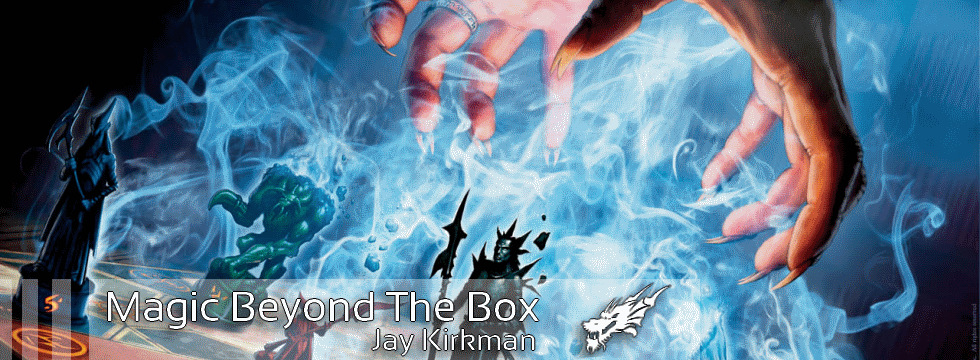
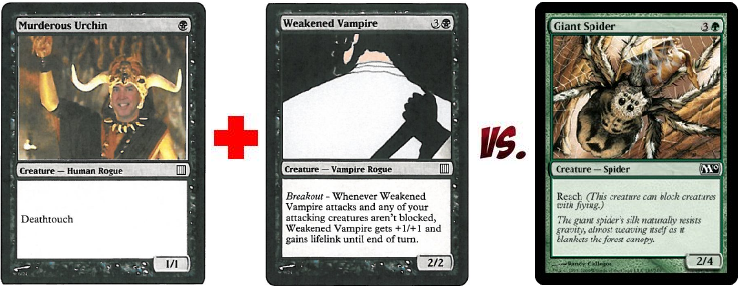
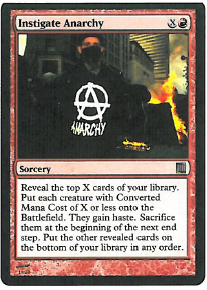



Glad you enjoyed the mock-ups. I just Google Image Searched for each card's name and took one of the top few hits, so it's worth noting that no assertion of ownership or copyright is implied for any of the pictures.
I figured the people who I was playtesting with, who were all casual or infrequent players, would take better to playtest cards that looked like real cards, and the presence of some kind of image would help us remember which card was which.
Sounds like a fun deck to play. On a side note, I think the picture of the hulking brute is my uncle.
I enjoy reading it. I fundamental to learn more on this subject.. Thanks for the sake theme this marvellous post.. Anyway, I am gonna subscribe to your silage and I wish you post again soon.